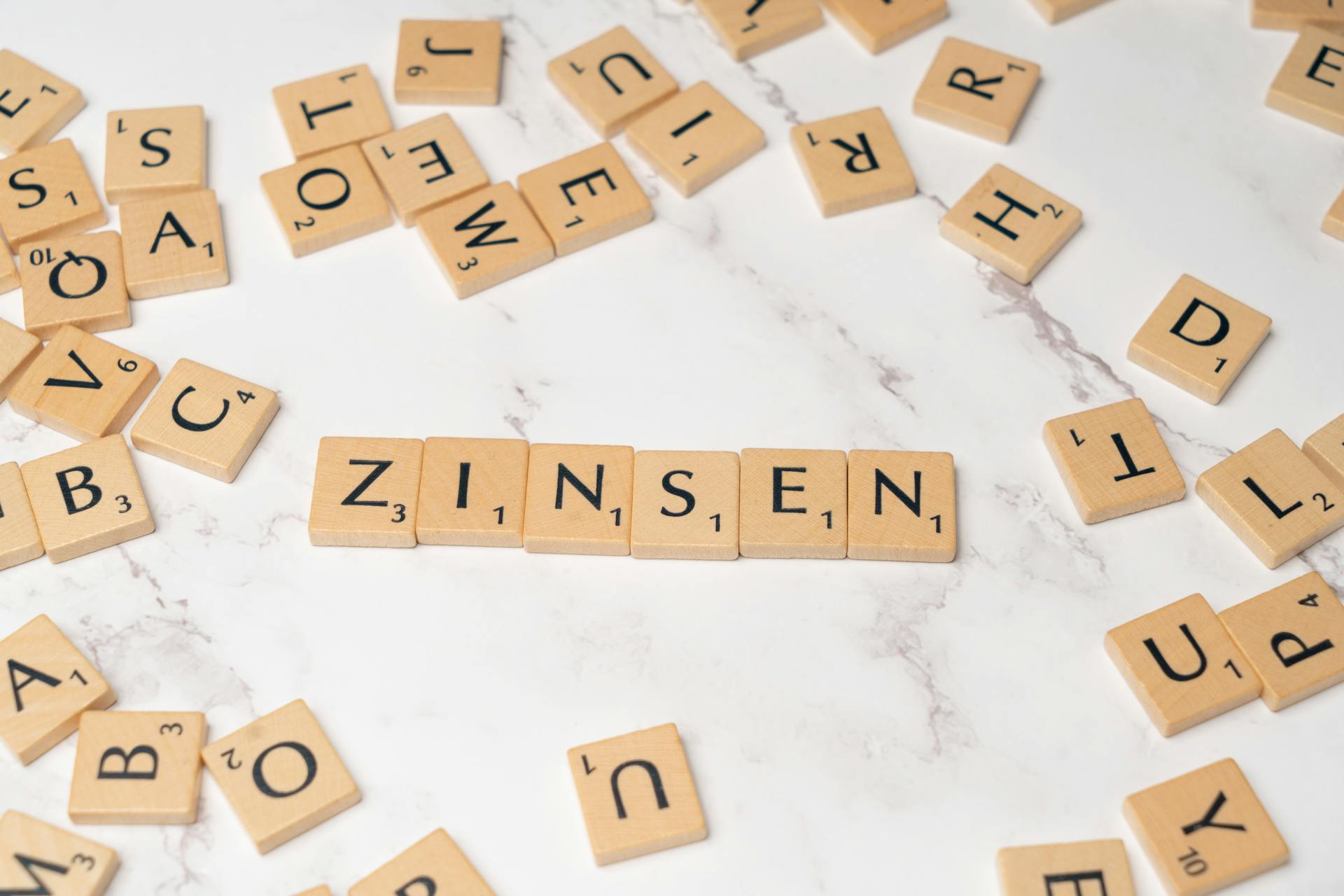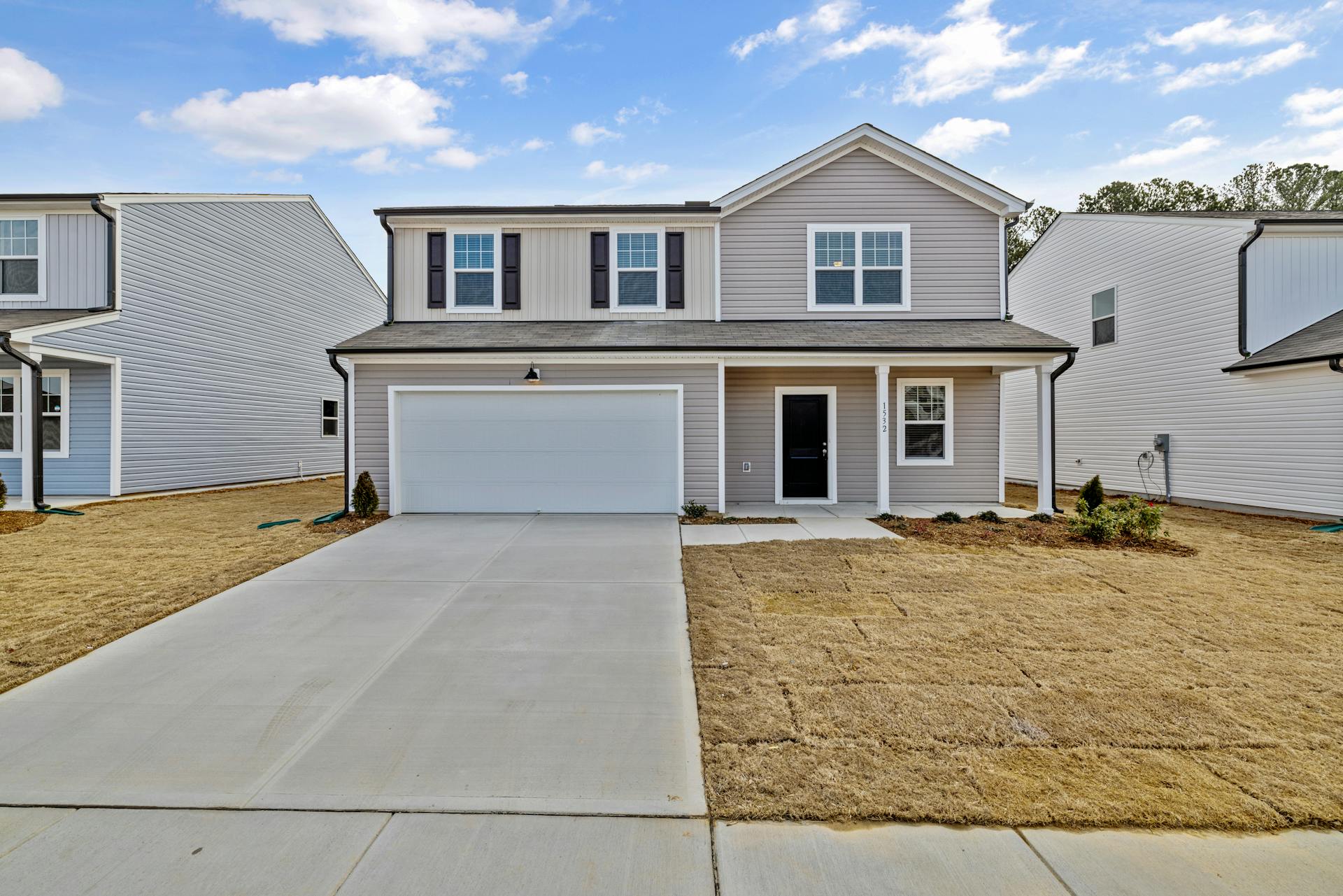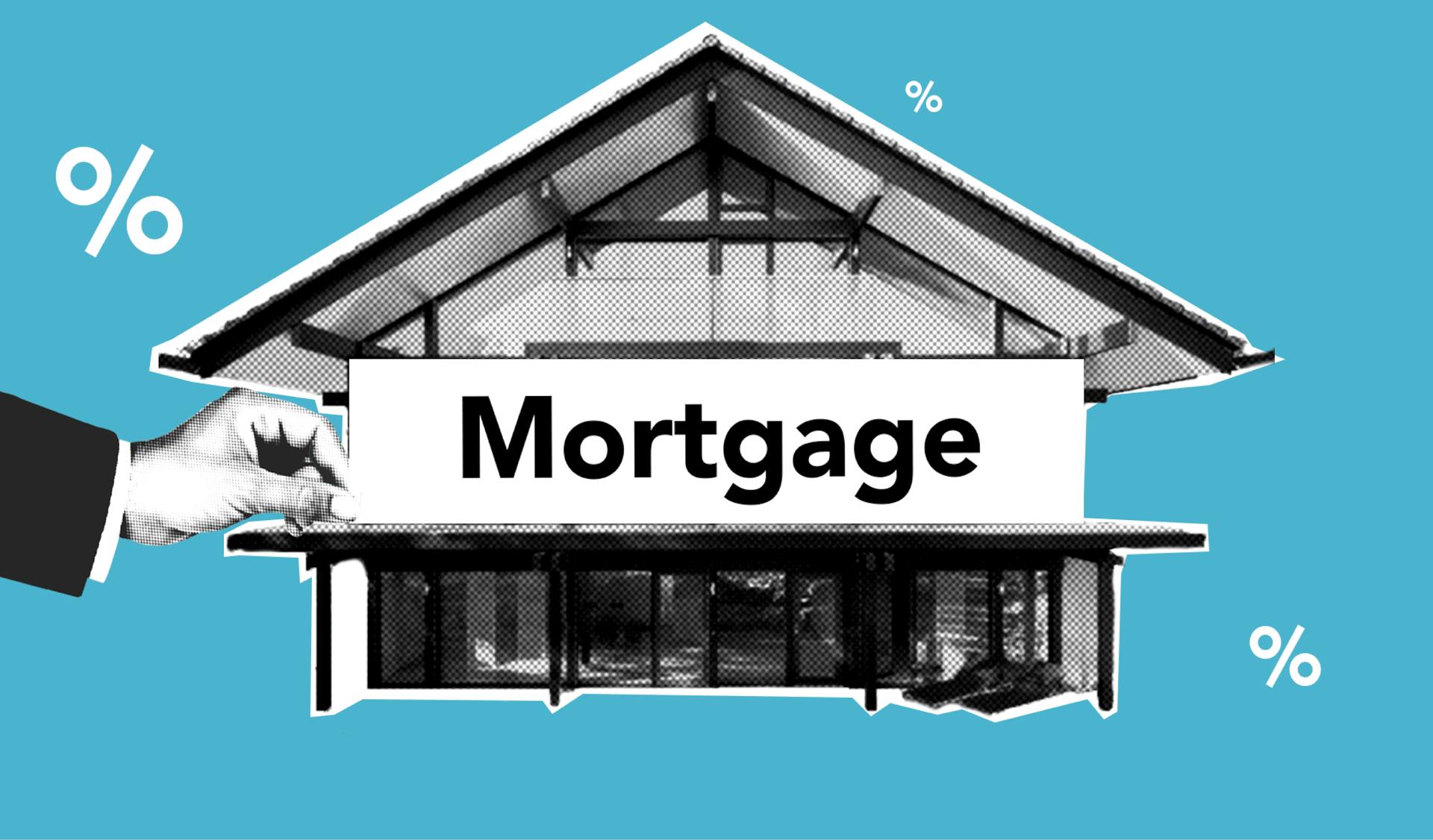
A rate buydown can save you thousands of dollars over the life of your mortgage. This is because a rate buydown reduces your interest rate, which in turn reduces your monthly mortgage payments.
By lowering your interest rate, you'll pay less in interest over the life of the loan. For example, if you're paying $1,000 per month on a 30-year mortgage, a 1% rate buydown could save you $36,000 in interest payments over the life of the loan.
This can be a huge advantage, especially for first-time homebuyers or those with limited budgets. Rate buydowns can also be a great option for those who want to take advantage of lower interest rates without refinancing their mortgage.
Suggestion: Balloon Payment at Maturity
What is Rate Buydown
A rate buydown is a mortgage-financing technique that allows you to obtain a lower interest rate for at least the first few years of the loan, or possibly its entire life.
It's similar to buying discount points on a mortgage in return for a lower interest rate, except that it's temporary. Typically, the seller or homebuilder covers the cost of the buydown.
The interest rate for a 3-2-1 buydown mortgage is reduced by 3% for the first year, 2% for the second year, and 1% for the third year.
One mortgage point costs 1% of your loan amount and lowers your rate by about 0.25%. This means that if you buy one point on a $400,000 mortgage, you'll pay an extra $4,000 upfront.
The rate reduction per point depends on the mortgage lender and the type of loan. With a $400,000 mortgage, buying one point can lower your rate from 6.25% to 6.00%, saving you $23,300 in interest over 30 years.
To understand how the potential cost and savings stack up, ask your loan officer to show you a few different quotes, with and without points.
Related reading: 1 Percent Mortgage Loans
Pros and Cons
A 3-2-1 buydown mortgage can be a great option for homebuyers when mortgage rates are high. It gives home sellers a way to entice buyers in challenging housing markets.
Borrowers who expect to have higher incomes in future years can also benefit from a buydown loan. Over the first three years of lower monthly payments, they can set aside cash for expenses like home repairs or remodeling.
A fixed-rate 3-2-1 buydown mortgage is less risky than an ARM or a variable-rate mortgage, where rising interest rates could mean higher monthly payments in the future.
Here are some key pros and cons to consider:
- Pros: Lower monthly payments, ability to save for expenses, and certainty of future payments.
- Cons: Increased upfront cost, need to break even on savings, and tying up liquid cash.
First-time home buyers may be able to afford a more expensive home with a lower interest rate. A better rate can drop their monthly payments and even help them qualify for a more expensive home.
Curious to learn more? Check out: Mortgage Insurance on Fha Loans
Pros
A 3-2-1 buydown mortgage can be an attractive option for homebuyers when mortgage rates are high enough to discourage a home purchase. This type of mortgage can give home sellers a way to entice buyers in challenging housing markets.
They give home sellers a way to entice buyers in challenging housing markets. By offering a buydown, sellers can make their homes more affordable and attractive to potential buyers.
You might like: Term Insurance for Home Loan

Buydown loans can be advantageous for borrowers who may not have the needed funds today but expect to have higher incomes in future years. This can be a great option for people who are just starting their careers and expect their incomes to increase over time.
Over the first three years of lower monthly payments, borrowers can set aside cash for other expenses, such as home repairs or remodeling. This can be a huge relief for homeowners who may not have the funds to cover these expenses upfront.
When the loan finally resets to its permanent interest rate, borrowers have the certainty of knowing what their payments will be for years to come, which can be useful for budgeting. This can give homeowners peace of mind and help them plan their finances more effectively.
A fixed-rate 3-2-1 buydown mortgage is less risky than an ARM or a variable-rate mortgage, where rising interest rates could mean higher monthly payments in the future. This makes it a more stable and predictable option for homeowners.
Here are some benefits of buying down your interest rate:
- Lower rates can save you money on both your monthly payments and total interest payments over the life of the loan.
- Buying down your interest rate can help you qualify for a home loan if your income is too low.
- Discount points, which represent prepaid mortgage interest, may be tax-deductible, providing additional savings.
Cons

A 3-2-1 buydown mortgage can be a tempting option, but it's essential to consider the potential downsides. The lower monthly costs may lull borrowers into buying a more expensive home than they can afford.
The temporary nature of lower monthly costs means borrowers must be prepared for a jump in payments. This can be a significant increase, and it's crucial to have a plan in place to manage the higher costs.
Borrowers who assume their income will rise enough to afford future payments could find themselves in financial trouble if this fails to occur. It's essential to have a realistic understanding of your financial situation and income growth potential.
Buying down your interest rate can also increase the upfront cost of buying a home, which can be a significant expense. You'll need to weigh the benefits of lower monthly payments against the higher upfront cost.
Here are some key things to consider:
- Upfront cost of buying points
- Break-even point for savings
- Tying up liquid cash
- Paying for private mortgage insurance (PMI)
Cost and Benefits
A rate buydown can provide significant cost savings for homebuyers, but it's essential to understand the costs involved. The cost of a 3-2-1 buydown mortgage is the total amount that the buyer saves over the three-year period of lower rates.
The upfront cost of buying down your interest rate can be substantial, but it may be worth it in the long run. For example, paying several thousand dollars to buy down your interest rate can result in long-term financial benefits.
To determine whether a rate buydown is right for you, you need to consider your break-even point. This is the number of years, months, or mortgage payments it will take before buying mortgage points is worth it.
Your break-even point will depend on how long you plan to stay in the home and how much you can save with a lower interest rate. According to an example, if you pay two points ($8,000) to reduce the interest rate on a $400,000 fixed-rate loan with a 30-year term from 4.5% to 4.0%, your monthly mortgage payment for principal and interest would drop by $117.
You might like: Balloon Loan Example
Here are some potential savings you could see with a rate buydown:
- After five years at 4.0%, you'll have paid $76,370 in interest payments, plus $8,000 in mortgage points, for a total of $84,370.
- With the 4.5% loan, you'll have paid $86,236 in interest.
- Your total savings in five years would be $4,730, and you'll have reduced your balance by an extra $2,842.
In some cases, sellers may be willing to pick up the fees involved with your permanent or temporary buydown, which can be a significant advantage.
Types of Rate Buydown
Permanent buydowns lower the interest rate by a certain percentage for the entire duration of the mortgage. This option provides stability and predictability for borrowers.
Temporary buydowns, on the other hand, result in a temporary reduction in the interest rate for a specified period, often the first few years of the mortgage term. This can be a great option for new homeowners who need a little extra help making payments.
A 3-2-1 buydown is a type of temporary buydown that involves a gradual reduction in the interest rate over the initial three years of the loan. The interest rate is reduced by 3 percentage points the first year, 2 percentage points the second year, and 1 percentage point the third year.
Here are some common types of rate buydowns:
- Permanent buydown: lowers interest rate for entire mortgage duration
- Temporary buydown: reduces interest rate for specified period (e.g. 3-2-1 buydown)
- 3-2-1 buydown: reduces interest rate by 3-2-1 percentage points over 3 years
Types of
There are several types of mortgage rate buydowns to consider, each with its own benefits and drawbacks. A permanent buydown can last for the entire loan term, but comes with a fee known as discount points that can be costly.
A permanent buydown involves paying a fee to lower your interest rate for the life of your loan, with each point costing 1% of your loan amount. For example, if your loan amount is $500,000, 1 point will cost $5,000.
Temporary buydowns, on the other hand, offer a temporary reduction in interest rate for a specified period, often the first few years of the mortgage term. This can be a good option if you're not planning to stay in your home for long.
The 3-2-1 buydown is a type of temporary buydown that involves a gradual reduction in interest rate over the initial three years of the loan. This option can be a good compromise between a permanent and temporary buydown.
For another approach, see: Fha Mortgage Insurance Premium Reduction
Sellers may also offer to contribute to your closing costs, which can be used to fund a buydown. This can be a great way to get a lower interest rate without paying out of pocket.
Here are the different types of mortgage rate buydowns to consider:
- Permanent buydown: lowers interest rate for entire loan term, with a fee due at closing
- Temporary buydown: temporary reduction in interest rate for a specified period
- 3-2-1 buydown: gradual reduction in interest rate over initial three years of the loan
- Seller contributions: sellers may offer to contribute to closing costs to fund a buydown
Temporary
Temporary mortgage rate buydowns offer a flexible way to reduce monthly payments. This type of buydown typically lasts for a specified period, often the first few years of the mortgage term.
APM offers borrowers two temporary buydown programs: a 3-2-1 buydown and a 2-1 buydown. The 3-2-1 buydown reduces the interest rate by 3 percentage points the first year, 2 percentage points the second year, and 1 percentage point the third year.
The temporary buydown programs can be a great option for new homeowners, as they allow borrowers to gradually work up to making the full payment. This can take massive pressure off as a new homeowner.
Intriguing read: 1st Mortgage vs 2nd Mortgage
The interest rate will adjust to the original rate at the end of the buydown term. It will stay at this rate for the duration of the home loan or until the loan is refinanced or paid off.
Temporary buydowns are especially popular in the financing of new homes, as home builders can negotiate the sale price and the mortgage simultaneously. In fact, between June 2022 and June 2023, 12 lenders were responsible for 80% of all temporary buydowns.
Here are the two temporary buydown programs offered by APM:
- 3-2-1 buydown: Reduces the interest rate by 3 percentage points the first year, 2 percentage points the second year, and 1 percentage point the third year.
- 2-1 buydown: Reduces the interest rate by 2 percentage points during the first year and 1 percentage point the second year of the loan.
The money for the temporary buydown goes into an escrow account and is applied to the loan every month during the buydown period. If the borrower refinance or sell during that period, the unused portion gets applied to the home loan, reducing the balance of the loan.
Frequently Asked Questions
Why would a seller do a buydown?
A seller may do a buydown to avoid lowering their home's asking price due to rising interest rates, instead choosing to help buyers with mortgage costs. This can help maintain the home's value and attract more buyers.
Is a 2:1 rate buydown worth it?
A 2:1 rate buydown can be worth it if you need lower mortgage payments in the short-term, but it's essential to weigh the benefits against the long-term costs and potential impact on your loan's overall interest rate. Consider consulting with a financial expert to determine if a 2:1 buydown aligns with your long-term financial goals.
How much does 1 point buy down an interest rate?
One mortgage discount point typically lowers your interest rate by 0.25 percent. For example, on a $300,000 loan, one point could save you $31.25 per month.
How much is 3 points on a mortgage?
Purchasing three discount points on a mortgage can lower your interest rate by 0.75%, saving you around $39 per month on a $100,000 mortgage. This can be a significant cost savings over the life of the loan, but the exact impact depends on your individual mortgage terms.
How much is 2 points on a mortgage?
2 points on a mortgage cost $2 for every $100 borrowed, or $2,000 on a $100,000 loan
Sources
- https://www.investopedia.com/terms/1/3-2-1_buydown.asp
- https://www.apmortgage.com/blog/interest-rate-hacks-to-reduce-your-monthly-payments
- https://themortgagereports.com/25363/paying-mortgage-points-whats-the-point
- https://bulletins.ncrec.gov/interest-rate-buydowns-are-you-violating-regulation-z/
- https://www.freddiemac.com/research/insight/20230731-temporary-mortgage-rate-buydown-activity-spiked-in
Featured Images: pexels.com


